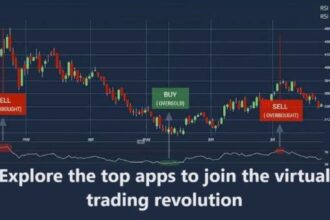The route toward creating a sustainable wealth collection often starts with the art of choosing stock and meticulously building a diverse investment plan. This is because the financing landscape is big and requires lots of various persons and things. That journey is filled with unexpected turns and twists, and it takes a heavy grasp of the ebbs and moves that arise in the economic industry
The way to successful DIY opportunities takes a blend of curiosity, study, and a willingness to learn. Image that journey as an odyssey, where each step requires navigating through the complicated tapestry of the inventory market. To start, one should acknowledge that industry is not only a ocean of figures; it’s a living, breathing entity designed by the experiences of the firms that populate it.
The Art of Stock Selection
Choosing the right stocks is akin to curating a gallery of possible future successes. It’s about knowledge the story of each company, dissecting its economic health, and predicting its trajectory. As you set about that journey, consider delving to the experiences behind the stocks.
Envision the inventory industry as a grand storytelling world where each company is a character using its distinctive plotline. Find the reports of triumph and challenges, read through annual studies, and grasp the subtleties of the industry landscapes. That immersive strategy changes inventory selection from only transaction in to a strategic investment in the development and possible of a business.
The Canvas of Your Portfolio
Today, envision your investment collection as a canvas waiting to be painted. Diversification, just like selecting a shade scheme, is crucial to making a balanced and sturdy masterpiece. Just as an artist blends hues to evoke thoughts, a experienced investor mixes various assets to understand the unpredictability of the market.
Diversification isn’t merely a guard against risk; it’s something for optimizing returns. By spreading your opportunities across various sectors and advantage courses, you minimize the influence of a downturn in virtually any single area. This is the economic artist’s brushstroke, carefully layering stocks, bonds, and perhaps even substitute opportunities to create a sturdy portfolio.
Understanding Risk: The Unseen Currents
In that economic documentary, knowledge risk is much like recognizing the currents beneath the ocean’s surface. It’s about acknowledging that industry, like the sea, can be equally serene and turbulent. Chance is not an adversary to be avoided by credit card debt comfort company in us but a power to be believed with and harnessed.
Every inventory comes using its own set of currents, influenced by industry tendencies, financial signals, and world wide events. Acknowledging and adopting these currents allows the DIY investor to understand the market’s ebb and movement, altering their sails to harness the winds of opportunity.
Monitoring and Adaptation
As our economic odyssey unfolds, it’s important to acknowledge that the journey doesn’t conclude with the original inventory selection and collection construction. Much like a ship at ocean, vigilant tracking and adaptation are essential to make certain a safe and affluent voyage.
Frequently assess the performance of one’s opportunities, keep attuned to promote developments, and get ready to adjust your sails accordingly. The marketplace, in the end, is a dynamic power, and successful DIY investors are those that evolve with it.
Restructuring and Negotiation – A Lender’s View
Loan restructuring is really a popular strategy lenders get each time a borrower is struggling to generally meet their repayment obligations. This process requires altering the loan phrases to produce payments more manageable. From a lender’s perspective, restructuring is really a pragmatic solution. It helps maintain a positive relationship with the borrower and escalates the likelihood of recovering the loaned amount. Borrowers must remember that lenders are often more open to negotiations than they could expect, especially when approached proactively and honestly.
The Importance of Clear Communication
Effective connection may be the bedrock of a healthier lender-borrower relationship. Lenders enjoy when borrowers hold them informed about their economic position or any challenges they could be facing in making repayments. That openness allows lenders to work with borrowers to get alternatives, as opposed to resorting to more drastic measures. For borrowers, clear connection can lead to more favourable phrases and steer clear of the strain associated with debt series processes.
Lenders and Regulatory Compliance
Lenders operate inside a structure of rigid regulatory compliance. These rules are created to defend both the lender and the borrower, ensuring fair techniques and moral lending. Understanding these rules will help borrowers feel more secure inside their dealings with lenders, understanding there are regulations in position to avoid exploitation and unfair practices.
Technology in Lending: A New Era
The development of engineering has revolutionized the financing industry. Online systems, automatic risk assessment instruments, and electronic connection routes have made financing more accessible and efficient. For borrowers, this means faster loan approvals, more clear processes, and often, more aggressive rates through best company for debt comfort.From a lender’s perspective, engineering has allowed greater risk management and a broader reach to possible clients.
Advice for Borrowers from a Lender’s Perspective
Lenders suggest borrowers to be sensible about their credit needs and convenience of repayment. It’s essential to read and realize all phrases and conditions of a loan agreement before signing. Borrowers must also policy for unforeseen conditions by sustaining a crisis fund and considering insurance choices where applicable. Responsible credit and regular repayments can lead to higher credit results and more good loan phrases in the future.



